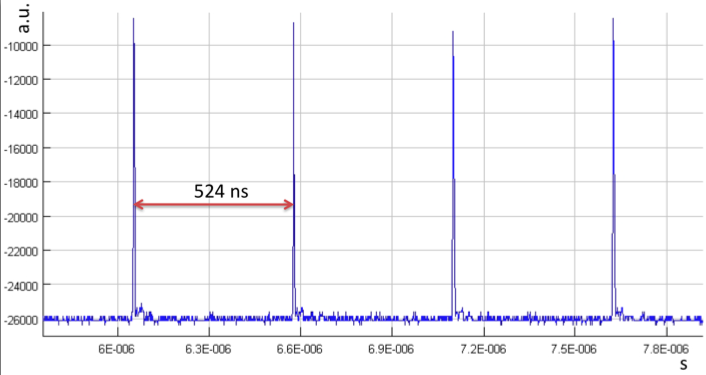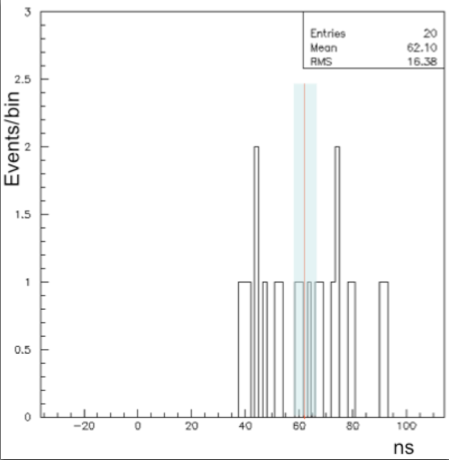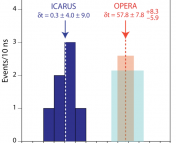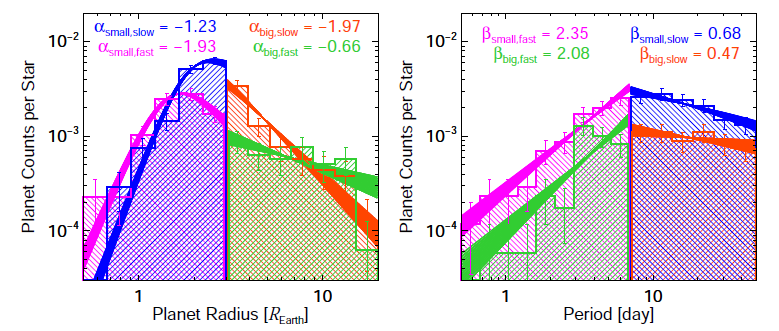Title: Measurement of the neutrino velocity with the OPERA detector in the CNGS beam
Authors: The OPERA Collaboration
The OPERA experiment in the Gran Sasso tunnel in Italy recently shocked the physics world by announcing that they had clocked neutrinos violating that ultimate of speed limits – the speed of light. Most scientists, upon hearing the news, rightly reacted with skepticism, and the results were closely examined to unearth any unaccounted-for sources of error that could have resulted in an incorrect measurement. Astrophysicists were especially skeptical regarding the measurement, because in some sense we’ve already conducted this experiment. If OPERA’s observed 60 ns delay were scaled up, the neutrino pulse from supernova 1987A ought to have led the light from the supernova proper by almost four years, instead of being received at approximately the same time (in fact, the neutrino pulse was received slightly before the light was observed, but the neutrinos gained their lead during the explosion proper, as the shock had to propagate through the envelope while the neutrinos passed right through). On November 17th, the OPERA collaboration responded by publishing a new paper to the arXiv that eliminated one of their systematics, the length of the neutrino pulses received from CERN. The paper found that their data still show a significant superluminal signal.
OPERA’s experiment involves firing a beam of neutrinos from CERN in Geneva out to their far site in the Gran Sasso tunnel, buried in the Alps. The neutrinos are produced using a proton beam boosted to 400 GeV by the Super Proton Synchrotron (SPS) at CERN. This beam is then fired at a graphite target to produce a beam of pions and kaons. These mesons are then allowed to decay into neutrinos and muons, after which they undertake the long trek to Italy. Because neutrinos interact only very weakly with matter, the particles travel through the 730 km of rock separating the two points without hindrance. Once they arrive at OPERA, the neutrinos end up in a pair of 625-ton photoscintillating detector modules.
Making an accurate measurement of the neutrinos’ velocity requires knowing two things: distance and time. OPERA must know the distance between its apparatus and the CERN site to extremely high precision; they must also know both the time the neutrinos were produced and the time they were received, and, more importantly, that the clocks that made both measurements were perfectly synchronized. The distance measurement is a matter of geodesy, and was done using a set of GPS beacons. GPS was also used to time the neutrinos’ departure and synchronize the two clocks (both the CERN departure point and the OPERA apparatus are equipped with specialized GPS beacons that have a much higher accuracy than the standard receivers).
Scientists reviewing the results have brought up two main sources of error: the timing of the pulses leaving CERN and the use of GPS to synchronize the two sites. The use of GPS is still under scrutiny, but thus far it has held up. Thus, the timing problem is the one the OPERA group chose to tackle first. The original neutrino pulses were produced from proton bunches fired so close together from SPS that researchers couldn’t determine definitively which pulse produced which neutrino batch, and instead relied on statistical matching of the probability density function (PDF) of pulses with the PDF of received neutrinos. The updated paper on the arXiv, however, now includes the results of a second test in which the OPERA collaboration asked CERN to produce the neutrino pulses in 3 nanosecond bursts, separated by 524 nanoseconds. This rhythm allowed OPERA to assign each neutrino to a parent pulse with a high degree of certainty. Although the researchers still can’t say precisely which proton produced which neutrino, they can now place it inside of a 3 nanosecond window, far smaller than their measured superluminal time difference of approximately 60 nanoseconds.
Although this new test has reduced OPERA’s margins of error and eliminated one of the possible critiques of the experiment, the real test of OPERA will be the replicability of its results. There are two current experiments that could make measurements similar to OPERA: the MINOS experiment at Fermilab, which fires a neutrino beam from Fermilab in Chicago out to a site in Minnesota, and T2K in Japan, which sends neutrinos from J-PARC to the famous Super-Kamiokande detector. Neither experiment is currently set up to make timing measurements specifically – both are designed to measure neutrino flavor mixing instead – and consequently they lack the extremely precise timing apparatus of OPERA. Researchers are scrambling to fix this, however, and MINOS reports that it may be able to provide preliminary results on the subject as early as summer 2012. No matter what happens, though, it is likely that scientists will be debating the matter for years to come.







Trackbacks/Pingbacks